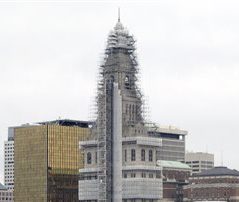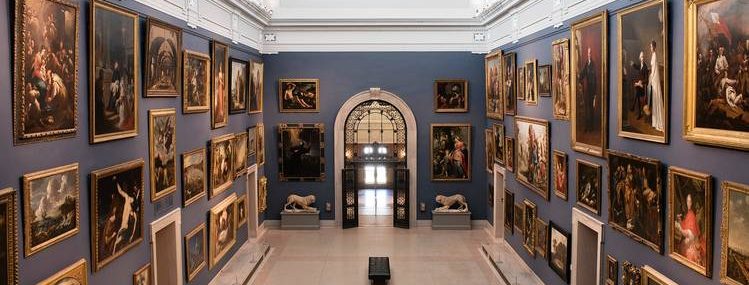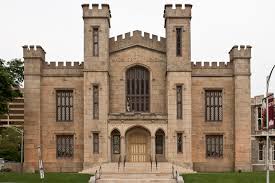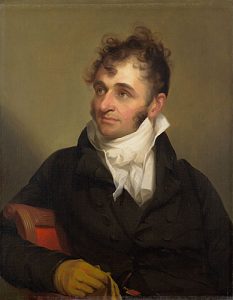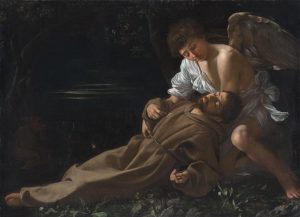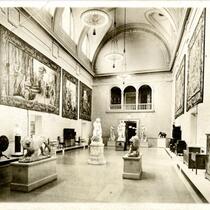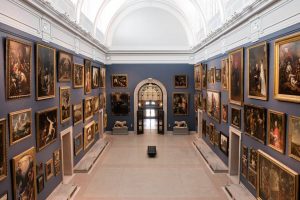Museums hold a special place in American culture, and they are frequently used to honor important artists and preserve the shared history and past of people around the world. In the United States during the 19th and 20th century there was a significant increase in the number of museums opening up across our growing country. Natural history museums and art galleries started to open their doors in all the major cities and towns across the country. One great example of this is the Wadsworth Atheneum located in downtown Hartford, Connecticut. The state of Connecticut was a popular cultural and economic center of America at the time, and it deserved to have a world class museum of its own as well. One enterprising man named Daniel Wadsworth decided to give the state just that.
Born in 1771, Daniel Wadsworth grew up in a very successful and wealthy family among Connecticut’s upper echelon. He spent his younger years as an amateur artist and traveled extensively, before deciding to make architecture his career. In 1841, he purchased some land off of Main Street in what is now downtown Hartford, and decided to create an art museum for the public.(Gaddis 99) Wadsworth wanted to make the museum into an Atheneum, which would include a library, cultural center, and an art school as well. The Wadsworth Atheneum opened its doors for the first time in 1842 and was officially the first public art museum in the nation, an honor it continues to celebrate to this day. The gothic architecture and wide grand galleries made the Wadsworth perfect for visitors to slowly walk through its hallways to view all the art on display.
As America began to grow as a country and settlers covered the continent, art museums and galleries became more popular and started to pop up in every major town and city. There was a widespread civic push among the wealthy class to share their personal and private collections of art and artifacts with the public, and Hartford soon had some serious competition. Almost equidistant between the major centers of New York City and Boston, the Wadsworth Atheneum had plenty of foot traffic to keep it busy, but it was soon forced to compete with the Metropolitan Museum of Art in New York and the Museum of Fine Art in Boston.
While the Met and the MFA were both opened after the Wadsworth, in 1870 and 1907 respectively, the two museums soon became more popular and housed more works of art than the Atheneum. While only a few museums around the world could hope to match the acquisition and operating budgets that these two powerhouses have today, curators and directors at the Wadsworth had to be fast and creative with new art and artists before anyone else to remain relevant. They had a stroke of genius in 1942 when they purchased the painting St. Francis of Assisi on Ecstasy, by the now famous Italian Renaissance master Caravaggio. Their acquisition of this painting was actually the first purchase of a Caravaggio by any American institution, and museums across the country scrambled to do the same.(Temple 90) The painting brought a significant boost to their admittance, and people still are amazed by the work today. The Wadsworth continued to have to compete with other larger museums, but they were able stay true to their roots while expanding on their world class exhibits.
Daniel Wadsworth passed away in 1848, just six short years after the Atheneum was opened. Before he died, he became the patron of artists Thomas Cole and Frederic Edwin Church, two of the most famous and prolific painters of the Hudson River School. The original collection at the Atheneum was built based on the acquisition of paintings from these two artists, but future acquisitions diversified the artwork on display. There were also significant expansions made to the Wadsworth buildings as well.(Wadsworth “History”) The Watkinson Library, Samuel Colt memorial, and J.P. Morgan memorial were all completed by the early 20th century, and increased the size of the museums for visitors to roam through and attend events.(Wadsworth “History”) There were other organizations inside the original complex, but when they left after the 1940’s, the Wadsworth became exclusively an art museum, giving it the opportunity and space to show off their thousands of pieces of fantastic art.
As the world moved into the 21st century, the Wadsworth continued to hold its place as one of the top museums in the country, and one of the finest art museums in the world. They continued to add to their collection and expanded into new genres, making sure there was art for everyone within its wall. Today, thousands of visitors and art lovers visit each year, something Daniel Wadsworth could only have dreamed of all those years ago when he first envisioned his art museum right by the Connecticut river.
Thanks for reading! If you want to learn more about the Wadsworth Atheneum, including their visiting hours and details about their collection, check out their website at
https://www.thewadsworth.org/
Or visit their digital archive at
http://argus.wadsworthatheneum.org/Wadsworth_Atheneum_ArgusNet/Portal/Public.aspx?lang=en-US
Works Cited
Gaddis, Eugene, “Foremost Upon This Continent: The Founding of the Wadsworth Atheneum” Connecticut History. Sep 1985, Vol. 26, p 99-114.
“History.” Wadsworth Atheneum Museum of Art, Hartford, CT. Accessed February 12, 2020. https://www.thewadsworth.org/about/history/.
“Temple of Delight; The Wadsworth Atheneum.” The Economist, vol. 417, 3 Oct. 2015.
